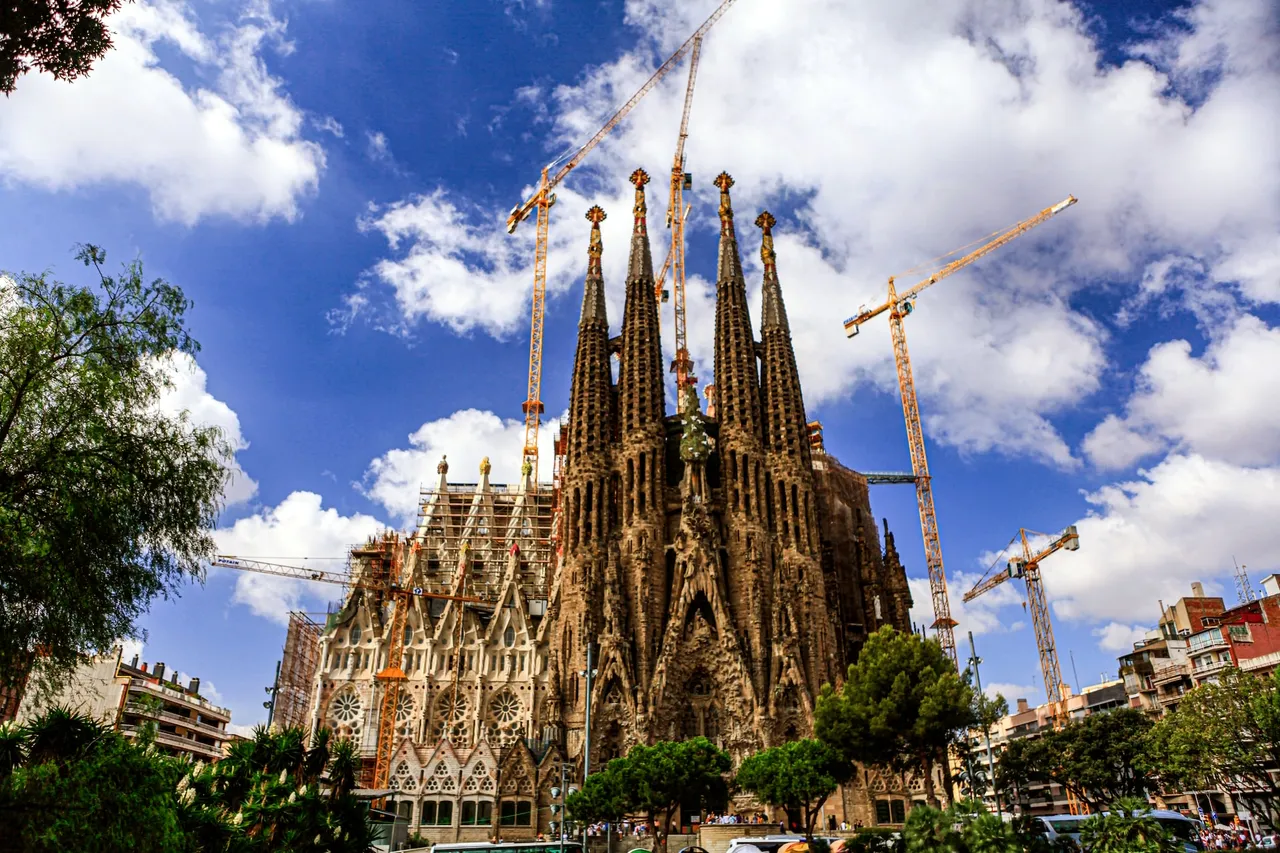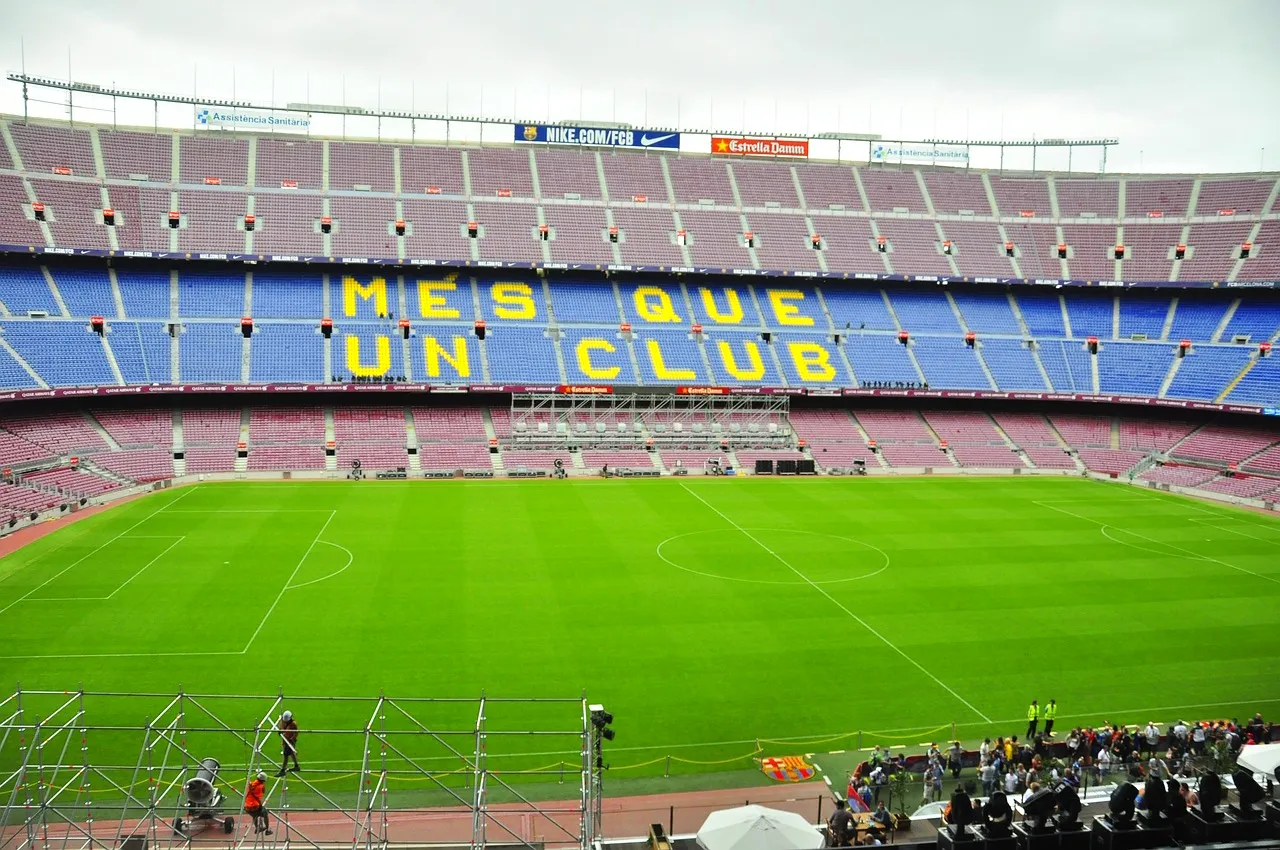Park Güell: A Magical Journey into Gaudí’s Wonderland
Park Güell is one of Barcelona’s most iconic and breathtaking attractions and a UNESCO World Heritage Site. Situated on a steep hill overlooking the whole city, this unique park is a must-visit destination for anyone exploring the Catalan capital. Designed by the famed architect Antoni Gaudí, Park Güell is a testament to his visionary style and the creative spirit that makes Barcelona such a vibrant and enchanting Barcelona city.
The history of Park Güell
Park Güell was built between 1900 and 1914 by Antoni Gaudí, a well-known architect and the face of Catalan modernity. The park was originally intended to be a housing project for aristocrats of Barcelona on a large estate called Bald Mountain. Eusebi Güell, a wealthy industrialist and patron of the arts, commissioned Antoni Gaudi to build a housing project on the estate.
The project began in 1900 and included a drainage system, viaducts, and part of the Esplanade. However, the project failed and only two houses were built within the estate by 1914 when the project was abandoned. The park became city property in 1923 and was officially opened as a public park in 1926, and was declared a UNESCO World Heritage Site in 1984.
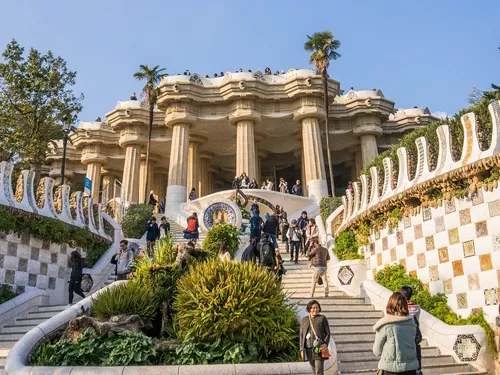
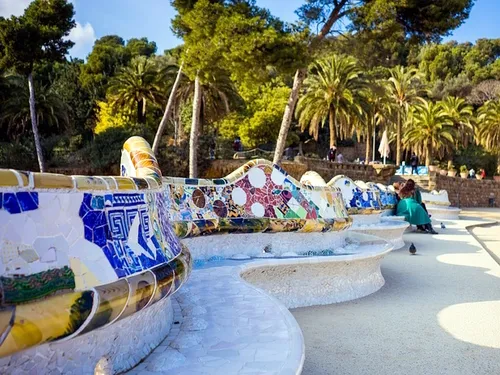
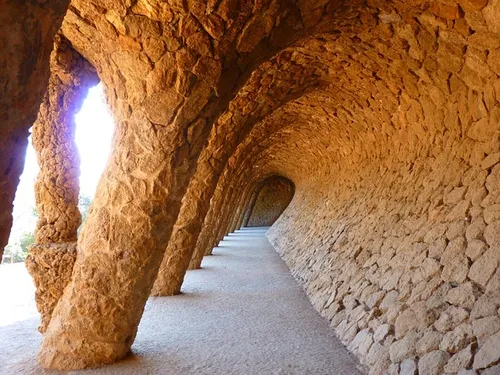
What to see at Park Güell?
Park Güell is a treasure trove of artistic and architectural wonders, with something new to discover around every corner. Here are some of the top sights to see at the park:
The gingerbread houses
The gingerbread houses are a whimsical and playful addition to the park’s landscape, with a design that is both imaginative and colorful. They are decorated with intricate details, such as colorful mosaics and curving lines that give them a unique character. They are a perfect example of the playful and imaginative style of Gaudi’s architecture. Some people call them by slang the houses of Hänsel und Gretel.
Dragon stairway
The dragon statue is part of the Dragon Stairway, which is one of the most famous parts of the park and has become a symbol of Barcelona. The stairway is hard to miss, rising from the entrance esplanade, are two enormous white staircases with a magnificent scaly balustrade. The stairway is surrounded by beautiful flowers and dragon fountains that add to the charm of the place.
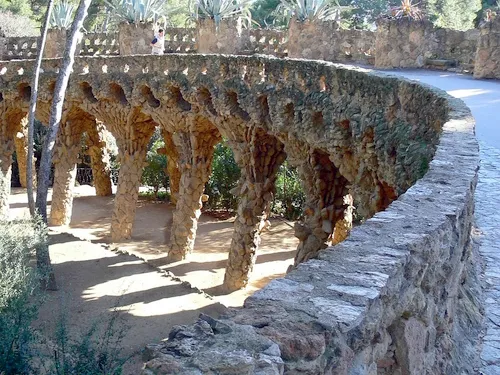
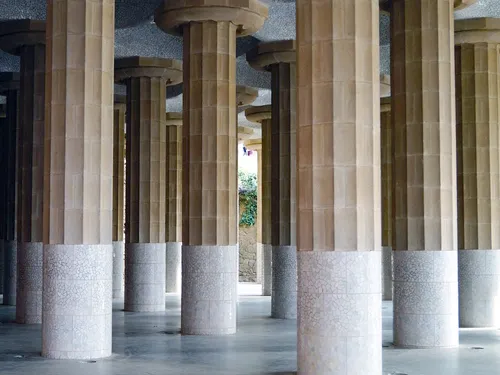
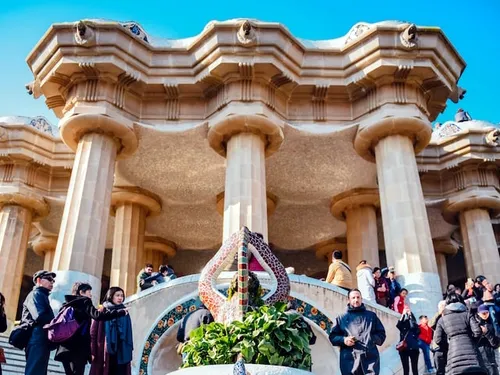
Austria Gardens
The Austria Gardens was originally one of the zones designated for plots in the estate. However, when Park Güell was converted into a public park, the area was transformed into a municipal plant nursery. This part of the precinct has a completely different appearance from the rest of the park. The garden was named after a donation of trees from Austria in 1977.
Hypostyle Room
In the center of the park, there is a big open space held up by columns that look like tree trunks. The curving lines of the room are inspired by organic shapes found in nature. This space is called the Hypostyle Room, which could be used as a marketplace for the estate. It is made up of 86 striated columns inspired in the Doric order. The outermost ones slope in an undulating movement clearly contrary to the rules of classical composition, while reinforcing a perception of their structural role. The ceiling is made up of small domes decorated with the original ceramic tail-shard mosaic panels by Josep Maria Jujol, Gaudí’s collaborator.
Laundry room portico
The Laundry Room Portico is located on the eastern side of the Greek Theatre square in Park Güell. It was designed by Gaudi to connect the potential houses to each other, but by doing it this way, the pathways didn’t stand out and were almost camouflaged into the hillside. The gallery of the room has the pattern of a great wave crowned with sloping columns, and a double terrace that acts as a supporter. The pillars at the exterior were put in place in order to secure the road above.
The famous bench at the Nature Square
Park Güell is first and foremost known for the fantastic mosaic bench designed by Antoni Gaudí in collaboration with Josep María Jujol. The bench is one of the most photographed monuments in Barcelona. It is shaped like a sea snake and meanders organically around the entire nature square, offering amazing views of the city.
The square measures almost 3,000 m2 and was built between 1907 and 1913. The bench is 110m long and is said to be the longest corrugated bench in the world.
Gaudí House Museum
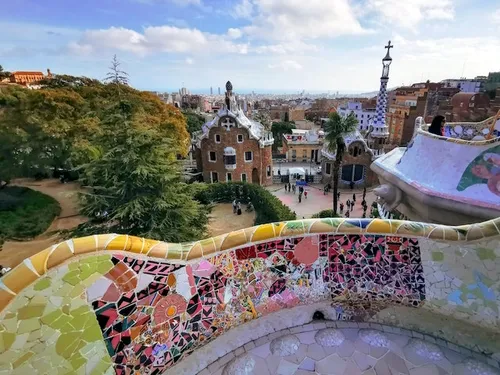
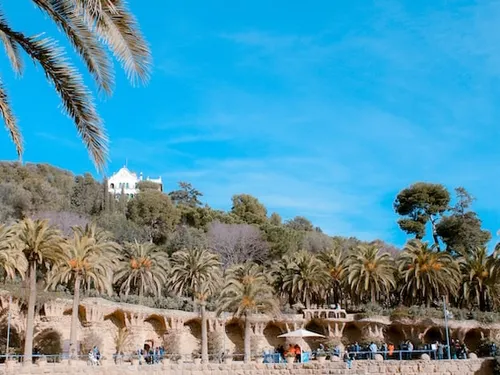
The Gaudi House Museum is a historic home museum located within Park Güell in Barcelona. It was the residence of Antoni Gaudí for almost 20 years, from 1906 till the end of 1925.
The museum houses a collection of furniture and objects designed by the Spanish architect Antoni Gaudí himself. Today, the museum is open to the public and is a great place to learn more about the life and work of Antoni Gaudí.
Viaducts
If you like hiking, you can walk along the viaducts that run along the top of the park’s hill. From here, you can see amazing panoramic views of the city and the surrounding area.
How to get to Park Güell?
By metro
Take line 3 (L3) to either the Lesseps or Vallcarca stop. From either stop, it’s a 20-minute walk to the park. The climb is steep but there are electric escalators.
By bus
Take bus line 24, H6, or D40 as it is easier to access the park with the bus.
Address: Carrer Olot, 7, 08024 Barcelona.
